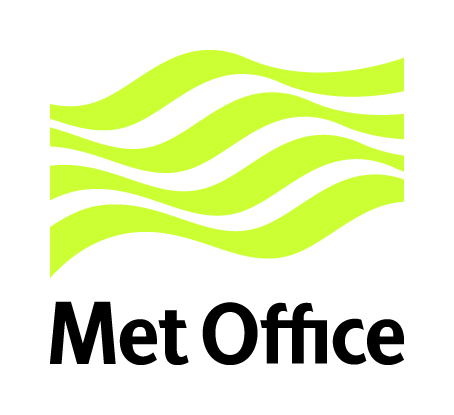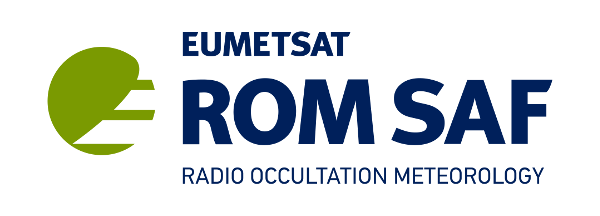User Survey 2006 Results
[reference number for survey report: SAF/GRAS/DMI/MGT/US2/001]Survey results
Of 503
transmitted emails 115 unique replies were eventually
received.
The results indicated a wide interest in
RO-based data with responses both from technical people involved in the GPS
missions now being planned and awaiting launch at the moment of writing, and
from the broader meteorological and climate research community. The results can
be summarized in many ways. An overview of the actual classes of answers is
given next, where the text of the questions have been paraphrased.
Answer frequencies are given in
percent of all answers to the particular question.
|
Q1:
What area of science is the responder working in? |
Atmospheric
sciences Engineering Ecology Climate
change Oceanography Paleoclimatology |
68 19 3 3 2 1 |
|
|
||
|
Q2:
Will you use RO data from the start, or wait for long-term coverage? |
Yes Wait
for long term coverage never |
77 15 7 |
|
|
||
|
Q3:
Do you want to use refractivity profiles? |
No Yes |
52 47
|
|
|
||
|
Q4:
Do you want to use single RO profiles, or gridded averaged data, or both? |
Both
profiles and grids Only
profiles Only
gridded data |
46 30
23 |
|
|
||
|
Q5:
If grid is coarse (e.g. 10x10 degrees), would you use it? |
Perhaps No Yes |
38 31 29 |
|
|
||
|
Q6:
Which time resolution is of interest? |
Monthly Other
(see Note 1) Seasonal |
62 27 8 |
|
|
||
|
Q7:
If data were also presented as graphs or maps, would you use them? |
Perhaps
(see Note 2) Yes No |
47 27 24
|
|
|
||
|
Q8:
Would you use uncertainty estimates? |
Yes Perhaps No |
85 9 5 |
|
|
||
|
Q9:
Would you use meta-data about the observations, data reduction steps, etc? |
Yes
No Perhaps |
61
19 18 |
|
|
||
|
Q10:
Would you use a web-site dedicated to data-manipulation and presentation? |
Yes Perhaps No |
52 35 11
|
|
|
||
|
Q11:
Which format do you prefer your data-files in? |
ASCII NETCDF GRIB HDF other |
44 33 11 7 2 |
|
|
||
|
Q12:
Would you like to have access to a help-desk? |
Important Unimportant useful |
44 3 2 |
|
|
||
|
Q13:
RO data is made available at various levels of processing. What level data
would you like to use? |
2 1a 3 Bending
angles 1b |
37 25 16 14 12 |
|
|
||
|
Q14:
What sort of data product would you be interested in? |
Profiles Assimilated Binned data |
37 37 25 |
|
|
||
|
Note 1: Many different
individual specifications of time resolutions were given, including pentads
and very short (hourly) resolutions. The emphasis among the detailed replies
was on high resolution in time. |
||
|
Note 2: The availability of
data in graphical form was appreciated by many. Such data would for most be
used in presentations, for teaching, in checks or first-look analyses. |
||
The number
of answers to each question varied from 138 (question 2) to 51 (Questions 13
and 14).
Conclusions
From the UQ
results and the distribution of answers we can summarize the results: Most
responders were in the atmospheric sciences and engineering, and would like to
use RO data as soon as it becomes available. Refractivity profiles alone will
be wanted by half, and most want access to both profiles and gridded data. Data
resolution in gridded data is most useful if high particular with high
resolution in time. Non-numeric data representations would be useful but not
used for primary science purposes. Uncertainty estimates would be used by
nearly all responders, as would meta-data and access to a help-desk function,
whereas a data-manipulation page on the internet was judged useful but not
essential by most users. By far most users want access to data in ASCII format
while the preferred packeted formats were NETCDF and
GRIB. There was no real clear favourite choice for the level of data most
requested, with all levels being indicated by some responders most did want
level 2 data.
The last two questions were directed more at
the expert level, and allowed for individual comments. Important points were
made regarding possible pit-falls in the generation of gridded climate data. If
studies of climate-change is to be possible with
RO-based data, then biases generated from sampling in time and space require
special attention. When multiple GPS satellites are in place in space and are
used for RO work, this problem will be less acute, but during operations with a
few satellites attention should be focused on the effects due to the time of
day when profiles fall in a certain region the time of day may drift during
the year and therefore monthly or seasonal averages may be biased. Comments were
also received on the potential community of users of RO data, and it was
evident that the call for high resolution RO-based data came from people
working with local surface processes, such as evaporation. In the future, when
many systems deliver RO data, products with simultaneous high spatial and
temporal resolution will be possible and will have an audience in that
community.
Original questionnaire
BACKGROUND
Occultations of the radio signals from GPS satellites can provide detailed information about the atmosphere. The data consist of high-resolution vertical profiles of atmospheric quantities like temperature, pressure, specific humidity and refractivity, from (near) the surface up to the upper stratosphere. The vertical resolution will be in the range 150-300 m, and radio occultation (RO) profiles have been demonstrated to contain a very high information content in the upper troposphere and lower stratosphere. Such RO data will soon be available from EUMETSAT's Metop satellite, which will give about 500 vertical atmospheric profiles per day evenly distributed across the globe, and from the COSMIC satellites giving about 3000 vertical atmospheric profiles per day.RO METHOD & BENEFITS
The basic principle of the RO method is that a receiver onboard a low-orbiting satellite tracks GPS signals as the transmitting satellite sets or rises behind the Earth. Due to refraction in the ionosphere and the neutral atmosphere the signal is delayed and its path bent, enabling calculation of profiles of the index of refraction (or refractivity) and subsequently temperature and humidity as a function of height. Many of the characteristics of RO data suggest them as a near- ideal resource for climate studies, particularly the global coverage, the all-weather capability, and the self-calibrated nature of the RO data. The latter property - which distinguishes RO from most other satellite observational techniques - allows for relatively easy inter-comparison of data from different satellites and RO instruments, which is required to construct long time series covering many years and even decades. The EUMETSAT Polar System (EPS), with its planned series of three Metop satellites, now provides an opportunity to create RO occultation based climatologies of high quality on a longer term. This will help us meet the requirements of both the scientific community and a wide range of climate data users. For these purposes, we are currently undertaking studies on how to best exploit the GRAS data from a climate perspective.THIS QUESTIONNAIRE
The GRAS SAF is part of EUMETSAT's network of Satellite Application Facilities (SAFs). The objective of the GRAS SAF is to deliver operational RO products from the GRAS instruments onboard the three Metop satellites. The GRAS SAF will enter into the operational phase and deliver products from around the beginning of 2007. In the GRAS SAF project we now need to determine the interest in climate data derived from RO profiles, and what form the data should have. Hence, this questionnaire tries to build a picture of the priorities of potential climate data users. Because the users of RO data will be from a wide range of fields, with different levels of interest and expertise, we divide the survey into three parts. You may skip the last part if you are not familiar with the RO technique.If you are not familiar with the radio occultation principle, you may want to read this short introduction.

|

|

|

|

|

